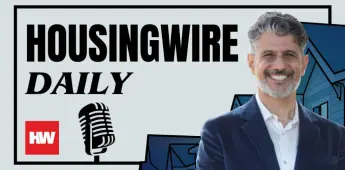Fannie Mae
The Federal National Mortgage Association, or as it’s more commonly known as, Fannie Mae, has a history that dates back to the Great Depression in the 1930s. Established by the U.S. Congress in 1938, the enterprise was born out of a need for more financial security in the housing market after the Great Depression resulted in a surge of foreclosures. The National Housing Act of 1934, which established the Federal Housing Administration (“FHA”) and the Federal Savings and Loan Insurance Corporation, was amended in 1938 to not only create Fannie Mae but also Fannie’s counterpart, the Federal Home Loan Mortgage Corporation, better known as Freddie Mac.
Fast forward to 2008 and the two enterprises were forced into the spotlight again during the Great Recession. Between an increasing number of people getting mortgages with little to no credit, a fast-growing supply of vacant homes on the market from borrowers going into default and many other factors that collided together, America’s economy was in trouble and Fannie Mae and Freddie Mac were at the center of it. In the aftermath of this, the United States government stepped in and put the enterprises under conservatorship, which is how they still operate today, acting now as government-sponsored enterprises.
In today’s market, Fannie Mae buys and guarantees mortgages, working with lenders in the secondary market, meaning they don’t actually originate or service the mortgages. Overseen by the Federal Housing Finance Agency, which was created in 2008 to supervise the two enterprises, Fannie Mae now operates to ensure the availability of affordable mortgage loans and maintain the 30-year, fixed-rate mortgage.
While talks heightened under the Trump Administration to remove both GSEs from conservatorship, the Biden Administration has shown no interest in continuing down that road. Instead, the current acting director, Sandra Thompson, is focused on achieving greater affordability in the housing market, expanding access to credit in underserved communities, fair lending and safety and soundness in the housing space.
Latest Posts
Covius integrates Stavvy for RON and eSign on loan mods
Jan 06, 2022Covius is integrating the Stavvy platform into its loss mitigation and loan modification solutions to offer RON and eSignature capabilities.
-
UWM is bullish on the resurgent private-label market
Jan 04, 2022 -
Lenders tread carefully around targeted lending programs
Dec 24, 2021 -
Private-label RMBS market has cause to celebrate
Dec 21, 2021 -
Forbearance rate dips to 1.67% in November
Dec 20, 2021 -
Freddie Mac misses low-income refinance goal
Dec 20, 2021 -
Who’s afraid of the PSPA?
Dec 06, 2021 -
Fannie Mae revs up its credit-risk transfer machinery
Dec 02, 2021 -
Ex-MBA prez Ronald McCord to pay $52M mortgage fraud penalty
Dec 01, 2021 -
How Fannie Mae is leveraging technology to expand access to homeownership
Nov 18, 2021 4:28 pm -
FHFA tells GSEs to prioritize affordability in 2022
Nov 17, 2021 -
More borrowers are getting forbearance modifications
Nov 08, 2021









